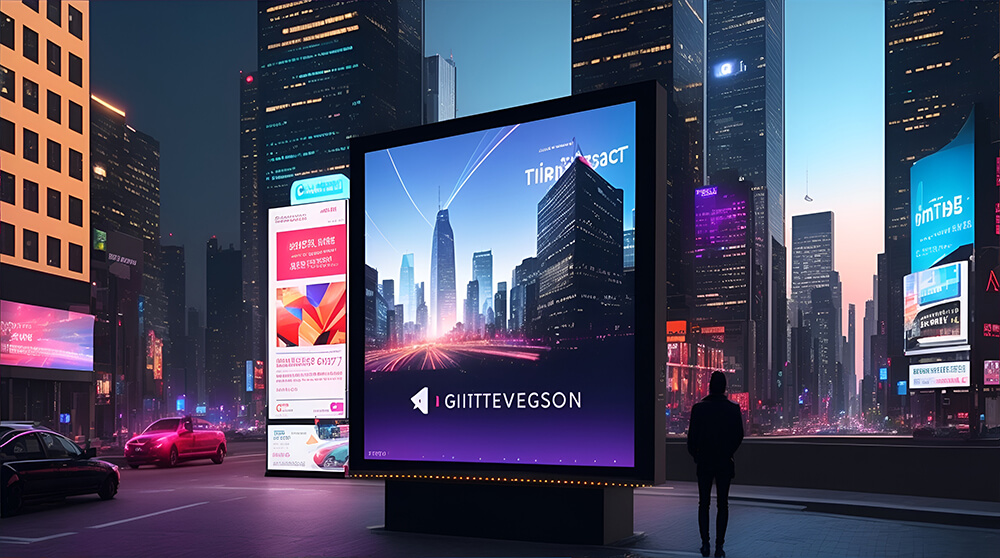Introduction to Digital Out-of-Home Advertising
Digital out-of-home advertising (DOOH) is changing how brands reach people in public spaces. In a country where consumers are frequently commuting, shopping, or moving through transit hubs, DOOH offers a dynamic, data-driven way for advertisers to capture attention across Thailand’s urban landscapes.
Unlike static billboards, DOOH uses digital screens displaying vivid, real-time content, adapting to time of day, weather, or audience behaviour. These screens are found everywhere: inside shopping malls, airports, along the BTS Skytrain stations, in office buildings, and at major traffic intersections.
In Thailand, DOOH is one of the fastest-growing advertising channels. Industry studies indicate the broader OOH/DOOH market in Thailand is valued at about USD 493 million in 2025, with digital DOOH growing strongly.
Leading companies such as VGI PCL are already using data platforms to power targeting across transit networks in Bangkok.
The rise of smart data and location-based targeting is transforming how advertisers reach audiences. By analysing foot traffic, weather, and real-time events, brands can serve hyper-relevant content tailored to each moment and place. At the same time, Thailand’s regulatory framework ensures these creative advances remain safe and respectful of public spaces.
Ultimately, DOOH offers brands a high-impact visual format that delivers emotional experiences, which can increase brand awareness and improve loyalty.
Benefits of DOOH
One main benefit is cost efficiency. For instance, buying space on a traditional printed billboard involves printing, installation, and removal costs, which all require significant manpower and time. In contrast, digital displays allow advertisers to push new creative versions quickly and remotely, cutting production time.
Another advantage is freshness. With digital screens, advertisers can easily run multiple versions of creatives. You could, for example, rotate different visuals each day, test different colours or messages, or adapt to local conditions. A/B-testing becomes seamless in DOOH: showing two or more versions of an ad to see which performs better, such as different key visuals, calls to action or slogans.
These capabilities give DOOH a distinct advantage over static OOH formats.
Introduction to Programmatic DOOH
Programmatic advertising involves the automated buying and selling of advertising space using software and algorithms. This is very similar to online programmatic advertising.
In programmatic DOOH, advertisers buy screen inventory via a Demand-Side Platform (DSP), while publishers offer inventory via a Supply-Side Platform (SSP). Both sides set conditions — e.g., which screen, time, audience, weather condition — and the system matches buying and selling in real time.
This automation allows brands to be more agile: activating campaigns instantly, pausing underperforming ones, adjusting targeting dynamically based on live data.
In Thailand, programmatic functionality is still emerging but gaining traction as media owners digitize their networks.
DOOH and Audience Data
Audience data in DOOH differs from online advertising. Online ads are served to individuals and carry rich personal-data profiles. In out-of-home, the screen does not know exactly who is viewing. Instead, audience measurement is done at the location level: number of passers-by, dwell time, approximate demographic profiles via anonymised mobile data, or on-device cameras that detect age/gender categories.
Thailand’s media owners are embracing these measurement tools. For example, the OOH solutions provider VGI built a customer data platform (CDP) to aggregate transit-card data, footfall and behaviour to improve targeting across its signage network in Bangkok.
Because of these data inputs, DOOH campaigns can now optimise by context (weather, traffic, time of day) rather than run fixed creatives in fixed slots. While the precision isn’t quite the same as online advertising, the scale and public visibility of DOOH offer complementary reach.
Top Trends in DOOH Advertising
1. Data-Driven Insights
DOOH campaigns in Thailand are becoming smarter and more responsive. Advertisers now measure not just reach, but engagement, dwell time and conversion paths. Programmatic platforms take inputs like weather, traffic and location data to deliver ads at optimal moments.
Platforms integrating mobile data and social analytics allow brands to understand how audiences interact with screens and adjust messaging instantly. In Thailand, market reports highlight that programmatic DOOH is forecast to grow at around 12% annually within the OOH/DOOH market.
2. Immersive & Interactive Experiences
3. AI-Powered Personalisation
4. Mobile & Omnichannel Integration
5. Hyper-Local Targeting
How to Develop an effective DOOH Advertising Strategy
1. Start with a Single, Measurable Goal
2. Use Data-Driven Targeting
Before selecting screens or locations, gather data specific to your Thai audience:
- Demographics & behaviour: are they commuters on the BTS in the morning, tourists in the airport, shoppers in Siam Square in the evening?
- Contextual behaviour: when and where are they most active?
- Pain points: what are they trying to solve?
These insights will guide screen selection and messaging.
3. Apply Geotargeting Strategies
Leverage DOOH’s location intelligence in Thailand:
- Local relevance: highlight a nearby branch, event or in-store deal.
- Real-time context: adapt by time of day, weather, or local event.
- Use transit or mall screens when commuters or shoppers are most present.
4. Build Audience Personas
Create 2-3 key personas in the Thai context:
- E.g. “Bangkok office commuter, age 25-40, uses BTS, buys coffee on weekdays”.
- “Tourist couple, aged 30-50 in Phuket, staying in a resort, seeking leisure offers”. Define age, gender, lifestyle, motivations and barriers, and use those personas to inform creative tone and placement.
5. Create Dynamic, Localised Content
Video-heavy creatives perform well, but clarity and localisation matter:
- Use dynamic content that rotates visuals based on data (location, time, weather).
- Localisation: reference familiar landmarks, local slang, cultural cues.
- Visual clarity: keep copy short, use large fonts, include a clear CTA.
This helps the ad feel like part of the environment rather than an interruption.
6. Launch, Monitor & Optimise
Deploy your DOOH campaign with a test-and-learn mindset:
- Choose screens (city vs. suburban, morning vs. evening).
- Set budget, schedule, creatives.
- Monitor real-time metrics: impressions, play counts, QR scans, conversions.
- Optimise: swap under-performing creatives, reallocate budget to better-performing screens, adjust scheduling or targeting.
7. Integrate DOOH with Digital Channels
Ensure your DOOH efforts are connected:
- Use QR codes linking to social, store maps, landing pages.
- Retarget people who passed by DOOH screens with social/display ads.
- Sync your campaign across channels: Google Ads, Meta Ads, email marketing, so messaging remains consistent and reinforces the DOOH exposure.
Real-World DOOH Examples
- The VGI network in Bangkok: VGI built a data platform that integrates transit-card behaviour, location data and signage performance to improve targeting of its digital signage network in Bangkok.
- A campaign by VGI in partnership with the agency SOUR Bangkok: the “Whoscall The Safety Station” public-awareness DOOH initiative aimed to alert commuters about scams via digital screens, showing how DOOH can be used beyond commercial messaging.
- Market overview cases: Reports note that a cosmetics campaign in March 2024 (by L’Oréal Thailand via McCann) used CGI-driven digital displays in Bangkok’s EM District and across the BTS network, demonstrating how local brands use digital OOH creatively in Thailand.
- Location-based inventory: Research shows Thailand’s premium transit and mall environments (e.g., along the BTS, in airports) remain high-value for DOOH, due to dwell time and audience density.
From programmatic buying to AI-driven personalisation, the DOOH ecosystem in Thailand is gaining maturity. Brands that treat it as an integral part of their omni-channel strategy, rather than just a standalone billboard, will see better impact.
Looking to plan your next DOOH campaign in Thailand? Get in touch to learn more about how our DOOH solutions can maximise audience engagement and boost ROI.





